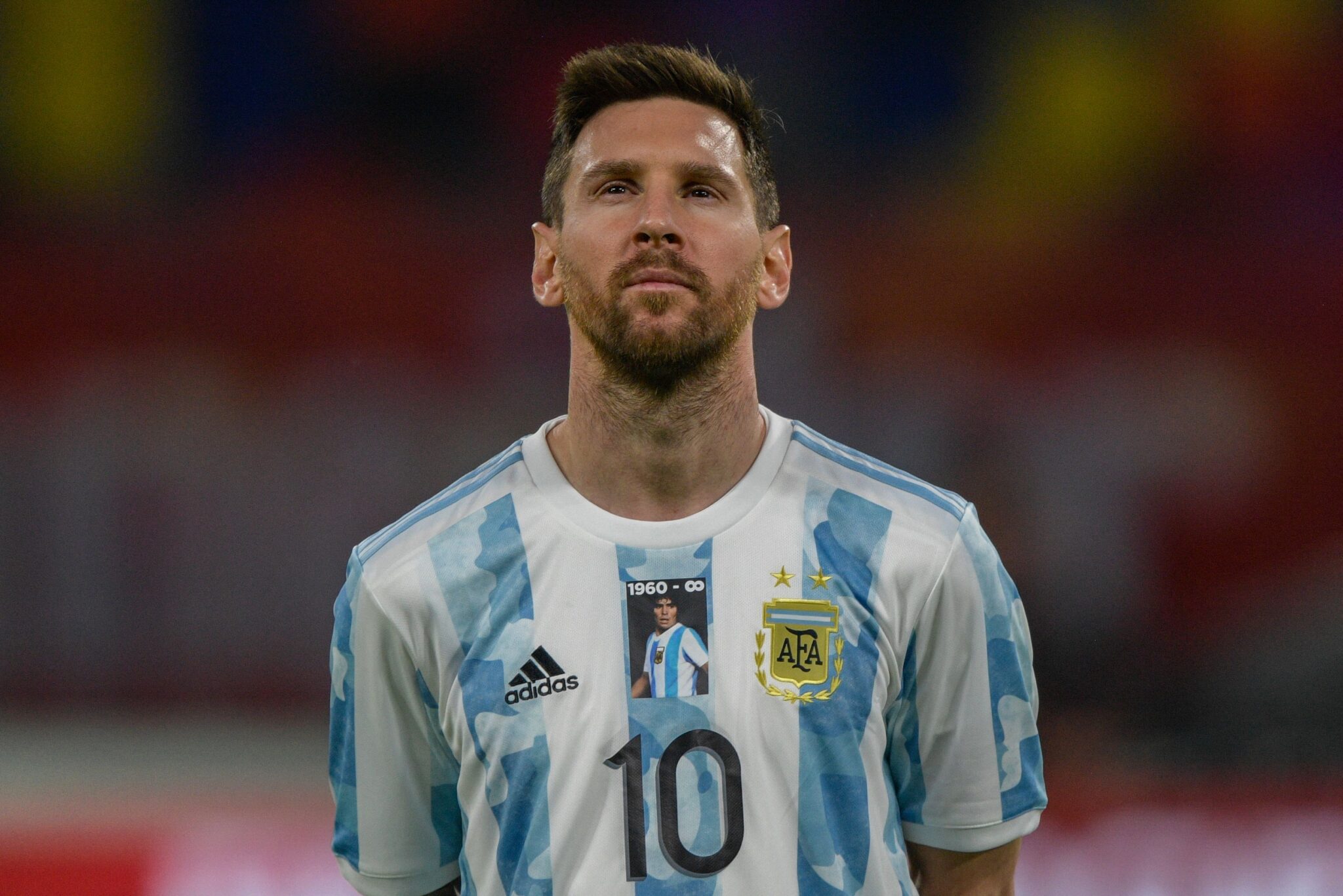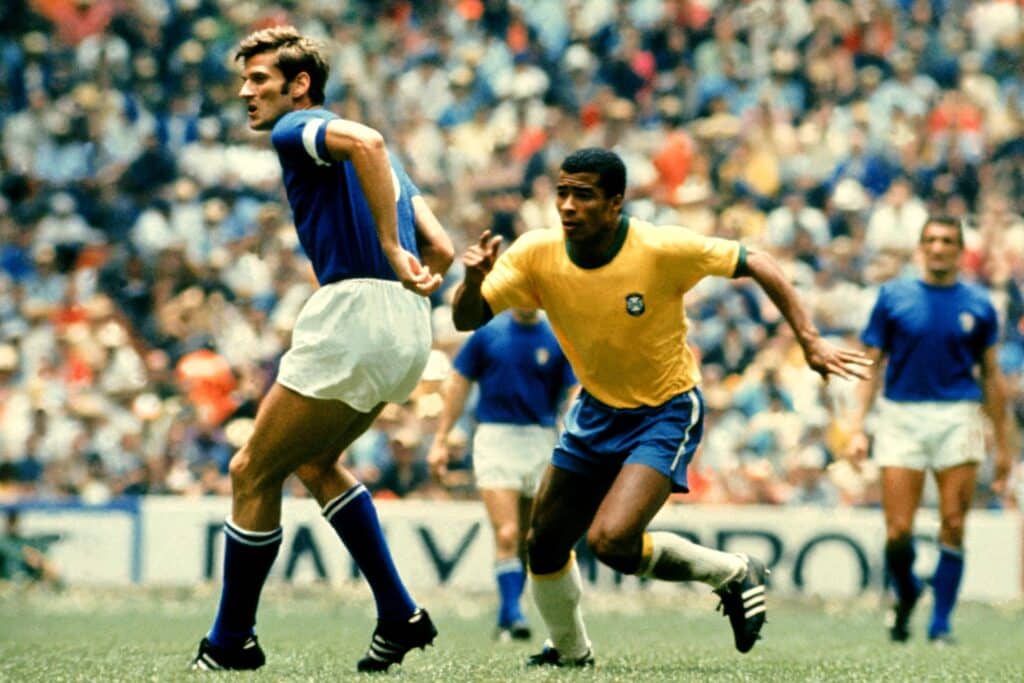Football’s Fashion Playbook: Kits That Became Cultural Icons

A packed stadium, the roar of the crowd, and 22 players charging onto the pitch like gladiators in polyester armor. But this isn’t just about goals, tackles, or VAR controversies—it’s about the threads. Football kits are more than uniforms; they’re canvases of identity, rebellion, and pure, unfiltered swagger. From the psychedelic swirls of the ‘90s to the minimalist chic of today, certain kits have transcended the game to become cultural juggernauts. They’ve graced album covers, strutted down runways, and even sparked riots. So, lace up your boots and adjust your shin pads—here’s a deep dive into the kits that didn’t just dress the beautiful game but redefined it.
Fashion Icons: The Coolest Kits
The Electric Kool-Aid Acid Test: Arsenal’s 1991-93 Away Kit
Let’s start with a kit that looks like it was designed during a fever dream at a rave. Arsenal’s 1991-93 away shirt—yellow with jagged blue-and-black zigzags—feels like the football equivalent of a Jackson Pollock painting. It’s loud, it’s chaotic, and it’s unforgettable. Back then, the Gunners weren’t just defending Highbury; they were defending their right to party. This kit dropped during the tail end of the Acid House era, and you can almost hear the thumping basslines of “Sweet Harmony” when you look at it.
Worn by legends like Ian Wright and Tony Adams, it became a symbol of Arsenal’s gritty, no-nonsense vibe. Fans didn’t just wear it—they lived in it. Decades later, it’s a retro darling, snatched up by hipsters and resold for triple digits on eBay. Adidas even reissued it in 2019, proving its staying power. Love it or hate it, this kit is a time capsule of football’s wilder days—when kits dared to be ugly and ended up iconic.
— Skill Leisurewear (@Skill_Kits) June 20, 2024
Arsenal 1991-93 Away jersey by adidas
One of the most iconic football shirts of all time, the famous bruised banana template was worn by Arsenal between 1991-93.
Featuring a classic v-shaped collar, the red flock trefoil logo (the last time it was seen in English… pic.twitter.com/i0AmKP1Ehh
Red Devils, Green Dreams: Manchester United’s 1990-92 Away Kit
If Arsenal’s kit was a rave, Manchester United’s 1990-92 away shirt was a quiet rebellion in lime green. Yes, lime green. On paper, it sounds like a disaster—like someone spilled a highlighter on a kit sketch and said, “Ship it.” But in practice? Pure magic. This was the dawn of the Fergie era, with a young Ryan Giggs and a snarling Mark Hughes turning Old Trafford into a fortress. The kit, with its subtle geometric pattern, was a middle finger to convention.
It gained infamy during a 1991 match against Southampton when United’s players claimed they couldn’t see each other in the gray fog—prompting a mid-game kit swap. Sir Alex Ferguson banished it to the archives, but fans never forgot. It’s since become a cult classic, a badge of honor for United supporters who revel in its weirdness. Today, it’s a streetwear staple, proving that even a misstep can age into a masterpiece.
The Ultimate full kit wonder: 1990-92 Manchester United away by Adidas pic.twitter.com/VUKSD8BHow
— Classic Football Shirts (@classicshirts) February 11, 2018
Samba Kings and Golden Threads: Brazil’s 1970 World Cup Kit
Some kits don’t just represent a team—they embody a nation. Brazil’s 1970 World Cup kit is the gold standard (literally). That canary yellow shirt with green trim and blue shorts isn’t just a uniform; it’s a vibe. Worn by Pelé, Jairzinho, and the most swaggerific squad to ever grace a pitch, this kit turned football into art during that Mexico tournament. They didn’t just win—they danced, they dazzled, they destroyed.
The design was simple yet bold, a perfect match for Brazil’s jogo bonito philosophy. It became a global symbol of joy and flair, popping up everywhere from Carnival floats to Quentin Tarantino films. Even now, when you see that yellow, you hear the samba drums. Nike’s modern updates have kept it fresh, but the ‘70 original remains untouchable—a kit so iconic it’s basically a UNESCO heritage site.

The Bruise Brothers: Nigeria’s 2018 World Cup Kit
Fast forward to 2018, and Nigeria’s Super Eagles dropped a kit so fire it broke the internet. Green and white chevrons slashed across a black base like a hawk in mid-flight. This wasn’t just a football shirt; it was a cultural flex. Designed by Nike, it sold out within hours of its release—three million pre-orders before it even hit stores. Football fans, streetwear heads, and random hypebeasts all wanted a piece.
On the pitch, Nigeria didn’t win the World Cup, but off it, they conquered the zeitgeist. Worn by stars like Alex Iwobi and Victor Moses, the kit became a symbol of Naija pride, blending football with Afrobeats energy. Drake was spotted in it. Fashion blogs dissected it. It even inspired knockoffs flooding Lagos markets. This kit didn’t just play the game—it rewrote the football fashion playbook.
CFS Shirts of the Year
— Classic Football Shirts (@classicshirts) June 1, 2023
We've taken a look back through some of our favourite shirts from the years CFS has been running!
Starting with 2018 and of course the shirt that took the scene by storm, the Nigeria World Cup home.
(Thread) pic.twitter.com/1cutofCipq
Venice Vibes: Venezia FC’s 2021-22 Home Kit
Football kits don’t usually scream “high fashion,” but Venezia FC said, “Hold my espresso.” The Italian side’s 2021-22 home kit, designed by Kappa, turned the lagoon city into a sartorial flex. Black with gold-and-orange accents, it evoked Venetian gothic architecture and gondola chic. The club had just clawed its way back to Serie A, and this kit was their victory lap—a middle finger to the gritty Calcio stereotype.
It wasn’t just for the pitch. Vogue raved about it. Influencers posed in it against canal backdrops. The club leaned in, launching a lifestyle brand around it—think scarves, hoodies, and overpriced coffee mugs. Sure, Venezia got relegated, but the kit’s legacy lives on. It’s proof that football fashion can transcend the scoreboard and land on a runway.
Has there ever been a better kit collection in a single season than Venezia's 21/22 Kappa line up? pic.twitter.com/sq5EJL5qux
— Pro:Direct Soccer (@ProD_Soccer) October 28, 2021
The Pink Panther: Palermo’s 2000s Kits
Pink isn’t a color you associate with football’s machismo, but Palermo didn’t care. In the mid-2000s, the Sicilian club turned their kits into a bubblegum-hued fever dream. The 2004-05 version, with its black-and-pink stripes, was peak audacity. Worn by a scrappy squad clawing through Serie A, it became a symbol of the underdog’s bite.
Fans embraced it like a family crest, and it didn’t hurt that Palermo’s ultras were as stylish as they were rowdy. The kit’s legacy grew beyond the island—streetwear brands like Supreme owe a nod to its unapologetic vibe. Today, vintage versions fetch collector prices, and the pink persists in Palermo’s DNA. It’s a reminder that sometimes, the boldest, most fashionable kits come from the unlikeliest places.

The Blackout Kings: Juventus’ 2019-20 Away Kit
Juventus is synonymous with black-and-white stripes, so when Adidas dropped a matte-black away kit with neon pink trim for 2019-20, heads turned. This wasn’t Turin’s old lady—this was a sleek, futuristic beast. Cristiano Ronaldo rocking it didn’t hurt, either. The minimalist design screamed nightclub vibes, and fans ate it up.
It doubled as a fashion statement, pairing as easily with jeans as it did with cleats. Juventus leaned into the hype, dropping slick promo vids that felt more Cyberpunk 2077 than Coppa Italia. It’s since become a collector’s gem, proving that even a traditional giant can reinvent itself—one blackout kit at a time.

So, what makes a kit iconic? It’s not just the design—though that helps. It’s the stories stitched into the fabric. Arsenal’s zigzag insanity captured a cultural shift. Brazil’s yellow became a nation’s heartbeat. Nigeria’s chevrons turned a team into a movement. These shirts aren’t just polyester—they’re time machines, teleporting us to moments of triumph, chaos, or pure joy.
Football’s fashion playbook isn’t static. Today’s kits flirt with retro nods and bold experiments, fueled by social media and a global audience. Brands like Nike, Adidas, and Puma aren’t just dressing players—they’re curating vibes. And fans? They’re the ultimate arbiters, turning a £70 shirt into a lifelong obsession. From the terraces to TikTok, these kits remind us: football isn’t just a game—it’s a runway, a revolution, and a damn good time. Now, which one’s your favorite?
By Nicky Helfgott – NickyHelfgott1 on X (Twitter)
Keep up with all the latest football news and Premier League news on 365Scores!





